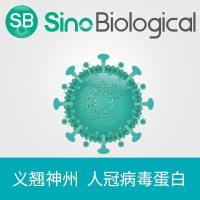Purification of Fibronectin from Human Plasma
互联网
742
Fibronectin is an ubiquitous extracellular glycoprotein that exists in a soluble form in body fluids and in an insoluble form in the extracellular matrix. It plays a major role in many important physiological processes, such as embryogen-esis, wound healing, hemostasis, and thrombosis (1 ). Fibronectin is secreted as a dimer, with a monomer molecular weight of approx 220–250 kDa; the monomers are joined by two disulfide bonds near the carboxyl terminus of the protein (2 ). Like many proteins of the extracellular matrix, fibronectin is a mosaic protein composed of modular units (3 ). Fibronectin is composed almost entirely of three types of modules (types 1–3). The modules are organized into functional domains that are resistant to proteolysis and contain binding sites for extracellular matrix proteins such as collagen and thrombospondin, cell-surface receptors such as integrins, circulating blood proteins such as fibrin, and glycosaminoglycans such as heparin and chondroitin sulfate (4 ). In general, fibronectin is synthesized by and is present around fibroblasts, endothelial cells, chondrocytes, glial cells, and myocytes. Fibronectin is abundant in the connective tissue matrix and in basement membranes (5 ). The distribution is quite characteristic for each cell and tissue. Although blood cells, such as lymphocytes, myelocytes, and erythrocytes, lack fibronectin, this gly-coprotein is abundant in the plasma (about 30 mg/100 mL). Actually, this body fluid represents the main source for fibronectin purification.









